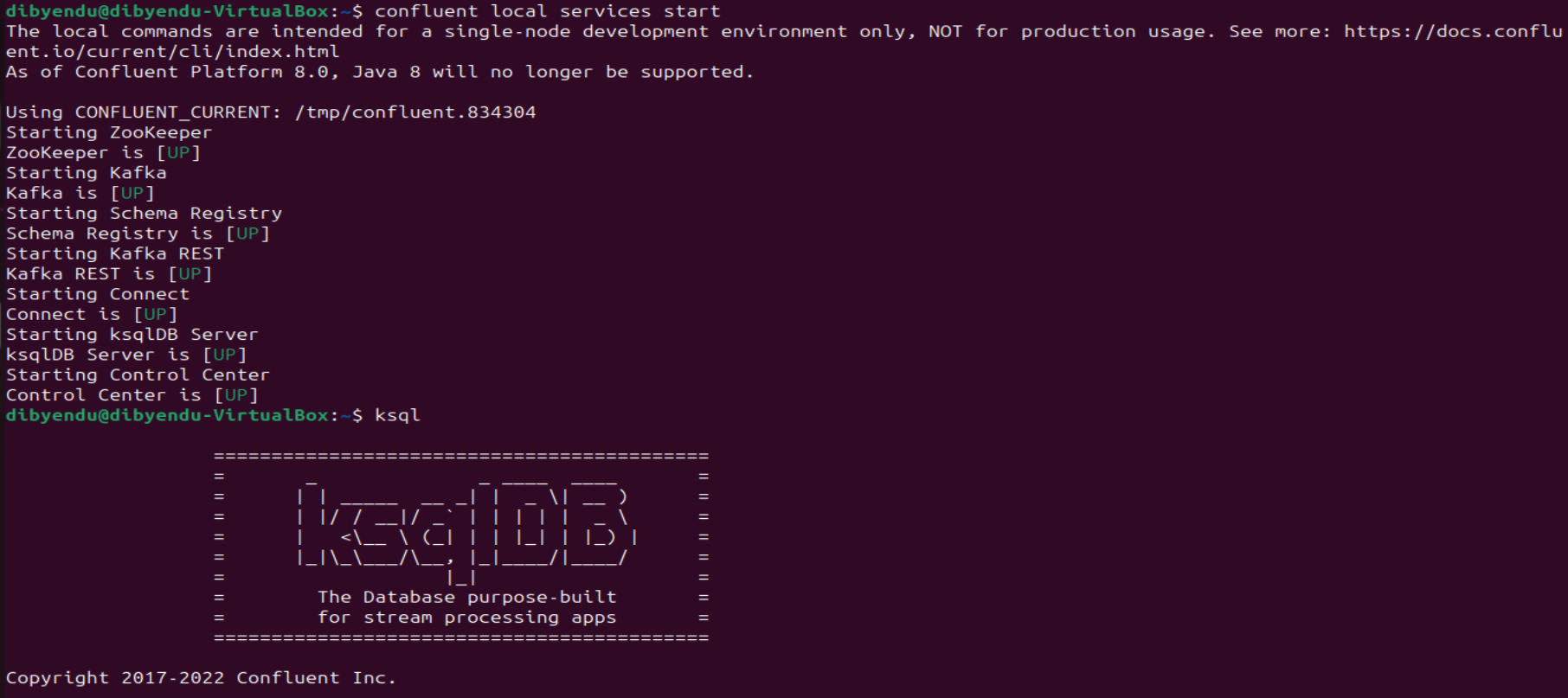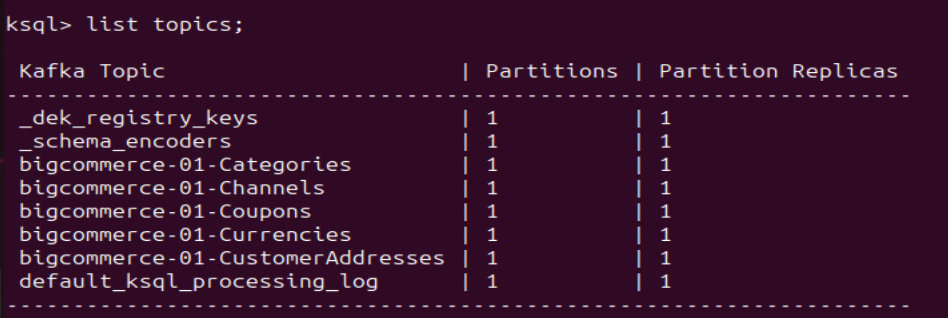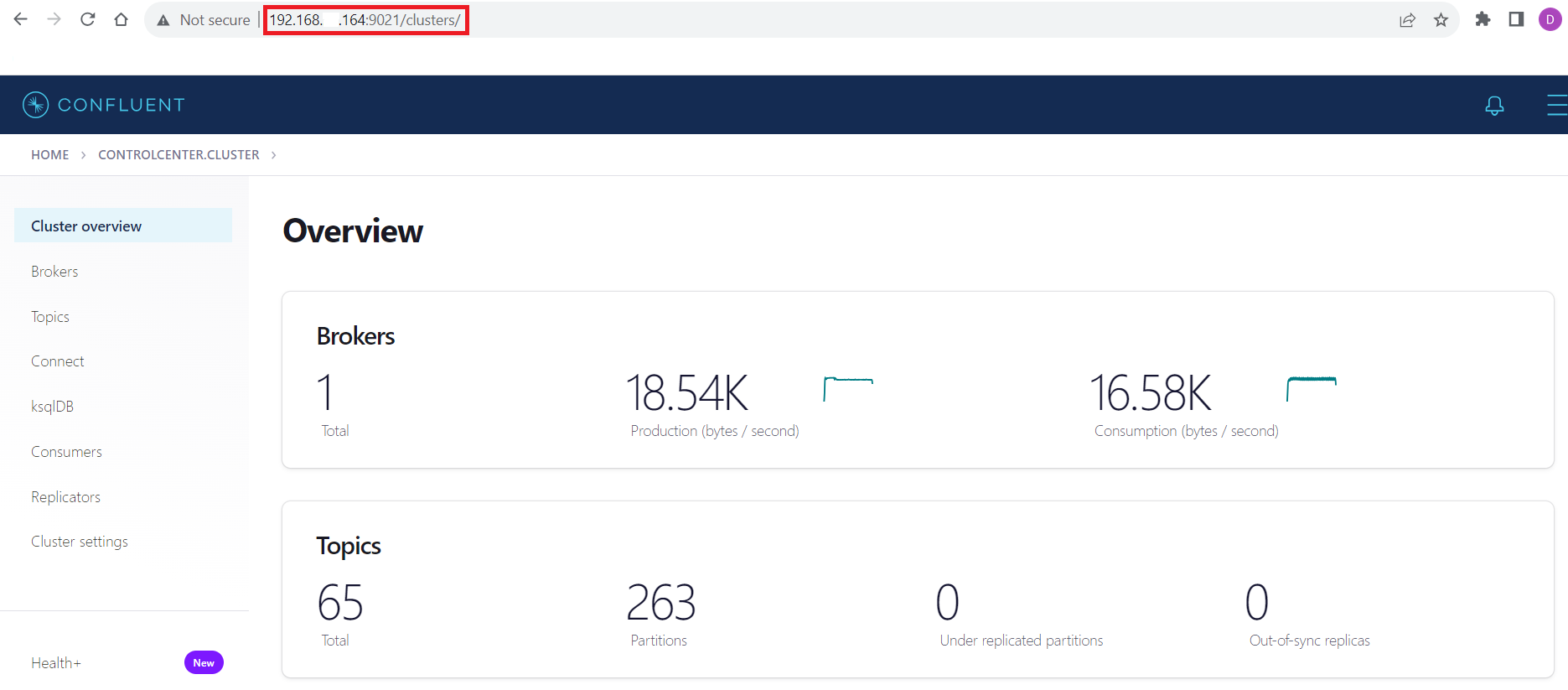Model Context Protocol (MCP) finally gives AI models a way to access the business data needed to make them really useful at work. CData MCP Servers have the depth and performance to make sure AI has access to all of the answers.
Try them now for free →Stream Salesforce Data Cloud Data into Apache Kafka Topics
Access and stream Salesforce Data Cloud data in Apache Kafka using the CData JDBC Driver and the Kafka Connect JDBC connector.
Apache Kafka is an open-source stream processing platform that is primarily used for building real-time data pipelines and event-driven applications. When paired with the CData JDBC Driver for Salesforce Data Cloud, Kafka can work with live Salesforce Data Cloud data. This article describes how to connect, access and stream Salesforce Data Cloud data into Apache Kafka Topics and to start Confluent Control Center to help users secure, manage, and monitor the Salesforce Data Cloud data received using Kafka infrastructure in the Confluent Platform.
With built-in optimized data processing, the CData JDBC Driver offers unmatched performance for interacting with live Salesforce Data Cloud data. When you issue complex SQL queries to Salesforce Data Cloud, the driver pushes supported SQL operations, like filters and aggregations, directly to Salesforce Data Cloud and utilizes the embedded SQL engine to process unsupported operations client-side (often SQL functions and JOIN operations). Its built-in dynamic metadata querying allows you to work with and analyze Salesforce Data Cloud data using native data types.
Prerequisites
Before connecting the CData JDBC Driver for streaming Salesforce Data Cloud data in Apache Kafka Topics, install and configure the following in the client Linux-based system.
- Confluent Platform for Apache Kafka
- Confluent Hub CLI Installation
- Self-Managed Kafka JDBC Source Connector for Confluent Platform
Define a New JDBC Connection to Salesforce Data Cloud data
- Download CData JDBC Driver for Salesforce Data Cloud on a Linux-based system
- Follow the given instructions to create a new directory extract all the driver contents into it:
- Create a new directory named Salesforce Data Cloud
mkdir SalesforceDataCloud - Move the downloaded driver file (.zip) into this new directory
mv SalesforceDataCloudJDBCDriver.zip SalesforceDataCloud/ - Unzip the CData SalesforceDataCloudJDBCDriver contents into this new directory
unzip SalesforceDataCloudJDBCDriver.zip
- Create a new directory named Salesforce Data Cloud
- Open the Salesforce Data Cloud directory and navigate to the lib folder
ls cd lib/ - Copy the contents of the lib folder of the CData JDBC Driver for Salesforce Data Cloud into the lib folder of Kafka Connect JDBC. Check the Kafka Connect JDBC folder contents to confirm that the cdata.jdbc.salesforcedatacloud.jar file is successfully copied into the lib folder
cp -r /path/to/CData JDBC Driver for Salesforce Data Cloud/lib/* /usr/share/confluent-hub-components/confluentinc-kafka-connect-jdbc/lib/ cd /usr/share/confluent-hub-components/confluentinc-kafka-connect-jdbc/lib/ - Install the CData Salesforce Data Cloud JDBC driver license using the given command, followed by your Name and Email ID
java -jar cdata.jdbc.salesforcedatacloud.jar -l - Enter the product key or "TRIAL" (In the scenarios of license expiry, please contact our CData Support team)
- Start the Confluent local services using the command:
confluent local services startThis starts all the Confluent Services like Zookeeper, Kafka, Schema Registry, Kafka REST, Kafka CONNECT, ksqlDB and Control Center. You are now ready to use the CData JDBC driver for Salesforce Data Cloud to stream messages using Kafka Connect Driver into Kafka Topics on ksqlDB.

- Create the Kafka topics manually using a POST HTTP API Request:
curl --location 'server_address:8083/connectors' --header 'Content-Type: application/json' --data '{ "name": "jdbc_source_cdata_salesforcedatacloud_01", "config": { "connector.class": "io.confluent.connect.jdbc.JdbcSourceConnector", "connection.url": "jdbc:salesforcedatacloud:; InitiateOAuth=GETANDREFRESH", "topic.prefix": "salesforcedatacloud-01-", "mode": "bulk" } }'Let us understand the fields used in the HTTP POST body (shown above):
- connector.class: Specifies the Java class of the Kafka Connect connector to be used.
- connection.url: The JDBC connection URL to connect with Salesforce Data Cloud data.
Built-in Connection String Designer
For assistance in constructing the JDBC URL, use the connection string designer built into the CData JDBC Driver for Salesforce Data Cloud. Either double-click the JAR file or execute the jar file from the command-line.
java -jar cdata.jdbc.salesforcedatacloud.jarFill in the connection properties and copy the connection string to the clipboard.
Salesforce Data Cloud supports authentication via the OAuth standard.
OAuth
Set AuthScheme to OAuth.
Desktop Applications
CData provides an embedded OAuth application that simplifies authentication at the desktop.
You can also authenticate from the desktop via a custom OAuth application, which you configure and register at the Salesforce Data Cloud console. For further information, see Creating a Custom OAuth App in the Help documentation.
Before you connect, set these properties:
- InitiateOAuth: GETANDREFRESH. You can use InitiateOAuth to avoid repeating the OAuth exchange and manually setting the OAuthAccessToken.
- OAuthClientId (custom applications only): The Client ID assigned when you registered your custom OAuth application.
- OAuthClientSecret (custom applications only): The Client Secret assigned when you registered your custom OAuth application.
When you connect, the driver opens Salesforce Data Cloud's OAuth endpoint in your default browser. Log in and grant permissions to the application.
The driver then completes the OAuth process as follows:
- Extracts the access token from the callback URL.
- Obtains a new access token when the old one expires.
- Saves OAuth values in OAuthSettingsLocation so that they persist across connections.
- topic.prefix: A prefix that will be added to the Kafka topics created by the connector. It's set to "salesforcedatacloud-01-".
- mode: Specifies the mode in which the connector operates. In this case, it's set to "bulk", which suggests that the connector is configured to perform bulk data transfer.
For other OAuth methods, including Web Applications and Headless Machines, refer to the Help documentation.

This request adds all the tables/contents from Salesforce Data Cloud as Kafka Topics.
Note: The IP Address (server) to POST the request (shown above) is the Linux Network IP Address.
- Run ksqlDB and list the topics. Use the commands:
ksql list topics;
- To view the data inside the topics, type the SQL Statement:
PRINT topic FROM BEGINNING;
Connecting with the Confluent Control Center
To access the Confluent Control Center user interface, ensure to run the "confluent local services" as described in the above section and type http://<server address>:9021/clusters/ on your local browser.

Get Started Today
Download a free, 30-day trial of the CData JDBC Driver for Salesforce Data Cloud and start streaming Salesforce Data Cloud data into Apache Kafka. Reach out to our Support Team if you have any questions.

